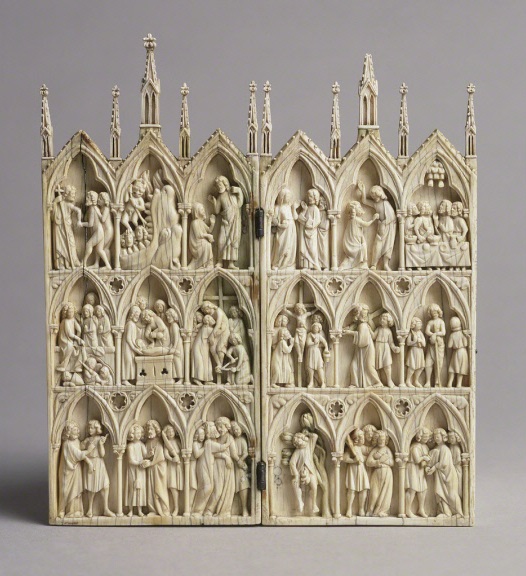Diptych with Scenes from the Passion and Afterlife of Christ, 1250-70

The Work
This object reproduces the appearance of a large stone sculpture that one might find in a church. The small size indicates that the object was used for private worship, and the high quality of the decoration indicates that the man or woman who owned this was very wealthy. Eighteen scenes from the Passion and afterlife of Christ are presented, and they appear to start at the lower left and end at the upper right. Each scene is framed by a Gothic arch, a reference to the architecture of a church that is emphasized by the vertical projections that decorate the "roof."
Historical Moment
In the Middle Ages, religion was a principal subject of art in private homes as well as in churches. People wanted to own objects for daily use that would remind them of Christ and his Resurrection, which for a poor family might be a simple wooden cross, but for the wealthy would include decorative objects of many types.
The Genre
A diptych is a work that has two attached parts, often a scene that folds open or closed. Diptychs or triptychs (with three parts) are often found in church altar painting. The form of this object allows it to be folded shut when it is not being used, for the protection of the delicate sculpture. It was therefore possible to carry it from one place to another.

